Manual: Collaborating on the Fly (in Ten Easy Steps!)
From the Series: Collaborative Analytics
From the Series: Collaborative Analytics
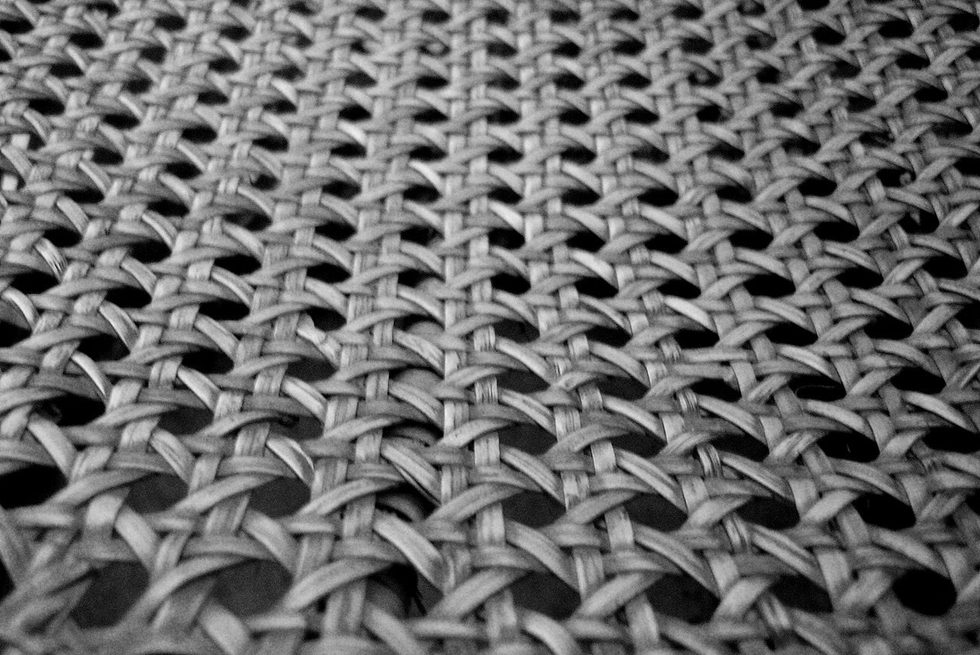
Dominic Boyer shares a set of “musewords” on collaboration culled from our precirculated papers and the previous day’s discussions. He then arbitrarily sorts us into small groups. Each group is tasked with collaboratively crafting two to three pieces of writing on collaboration. We are given up to three hours.
The members of our group have never collaborated with each other. We had never even met until the previous day. We sit in a circle—that’s the formation for these things, right? We are visibly uncomfortable. We struggle to find a point of connection. Four musewords for our non-amused state: duration, iteration, improvisation, material. Maybe these will be method enough.
Someone riffs on duration.
Silence ensues, then awkward laughter.
Iteration?
Silence, laughter, averted gazes.
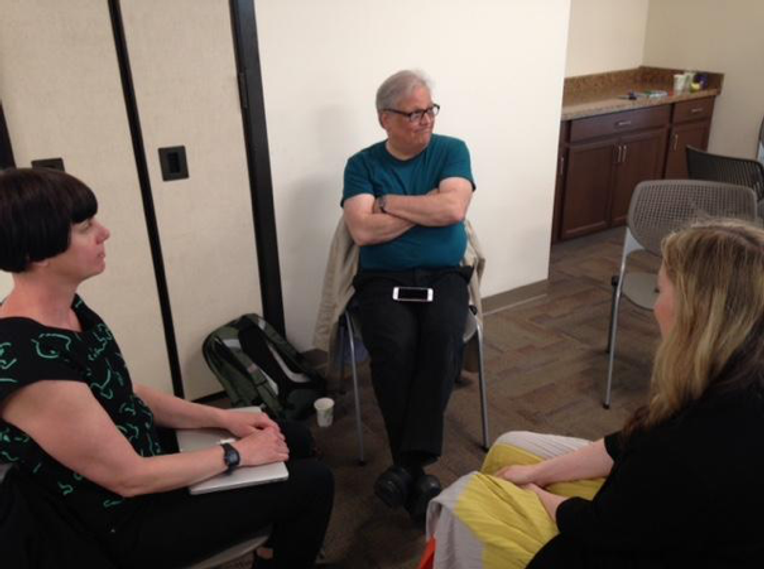
We give up.
We each confess that, despite our respective collaborative projects and commitments, we all profoundly dislike forced group work. We share a mutual feeling that this is the anti-collaboration: we don’t have trust or common ground, we don’t have a shared project that we are excited about or that we devised together, and we don’t have a shared structure that we co-created. We only have a task, a timeline, and a set of collaborators, none of which we chose.
Refusal is our first point of connection. Articulating what we hate about this situation helps us to articulate what we like about other collaborative encounters. Could we write about that? But wait: how do we collaboratively write about collaborating, or not collaborating, while we are in these anti-collaborative conditions?
That would be a very helpful thing to know how to do, we agree. An idea: why don’t we create a manual?
We look at each other, uncertain. So where do we start?
Museword: improvisation.
Let’s talk about improvisation?
Silence.
We are back to the problem of an imagined text that none of us has yet imagined. A manual in formation—stumbling is how it goes.
It’s helpful if you have material, we agree. We need to build something, not a text, but a material thing, manually, together—a foundation for how to communicate.
Our second point of shared refusal: we will not write anything. We will play with the matter at hand, an experiment in figuring through and thinking with materials.
Working backward, we start with manual collaboration to write a manual on collaboration.
We have paper. What if we build a structure? Origami? Too hard. Let’s keep it simple. Paper airplanes? OK.
We fold, we falter. Wait: who remembers how to make one of these things?
We go online and search for “paper airplanes.” We are compelled by a top Google result: www.theartofmanliness.com. Crafting gender. Gendering crafts. We are prompted (duration! iteration!) to Google “feminist paper airplane.” Ethnographic lines of flight.
We pick a design and get to work. We talk and fold together. Our discomfort dissipates, as we engage in protocol play together, and we realize retroactively how critical it was that we chose something simple in which we were all equally un/skilled.
As we work through the images in the plane-making protocols, each showing a completed step, we realize that we have a model for our manual.
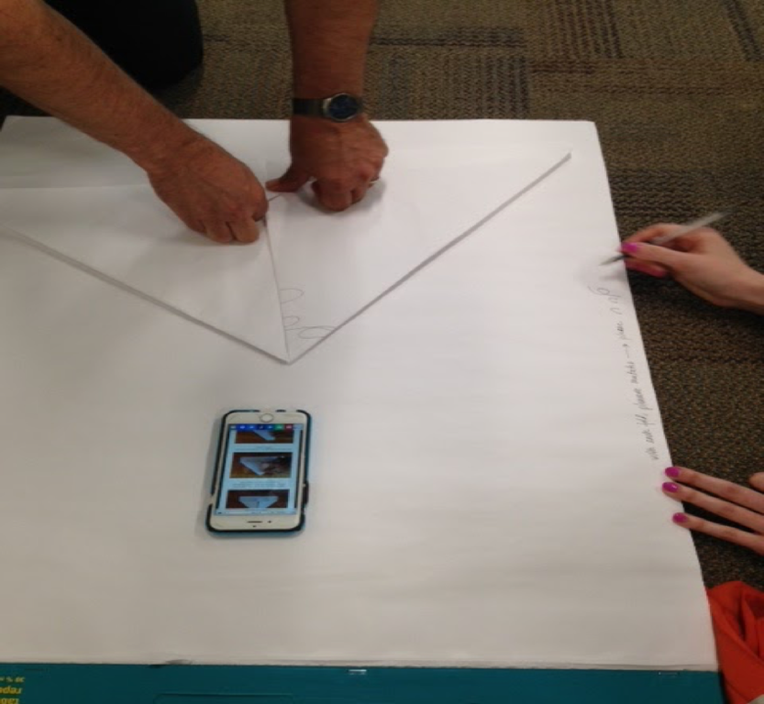
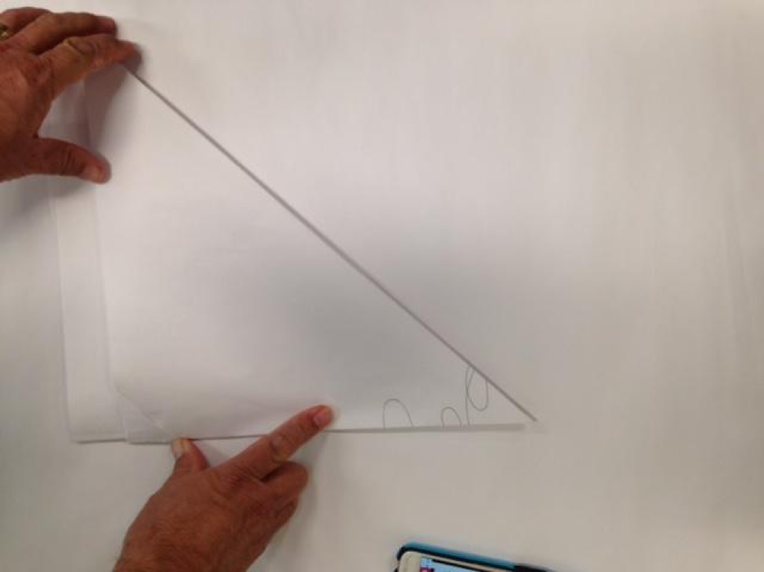
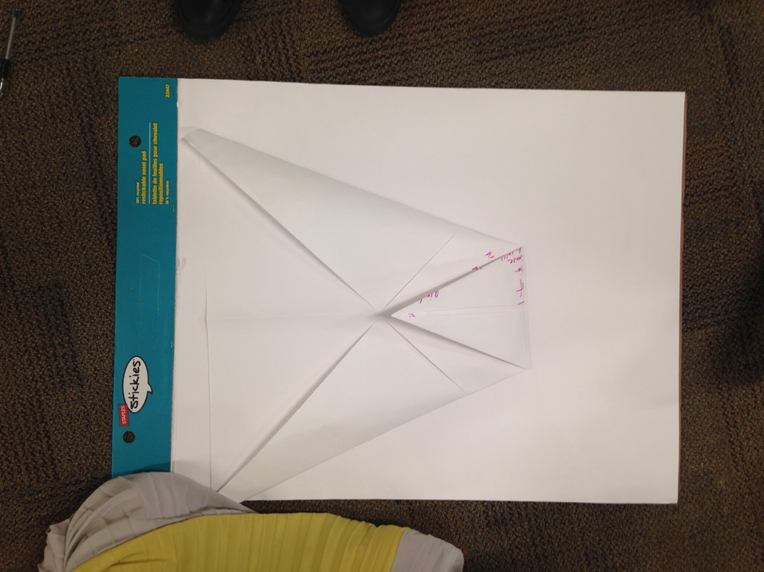
As we execute each folded stage from the plane-making manual, we capture it for our own collaboration-making manual.
We try different designs, experiment with the protocols, explore how folds shape flight.
Museword: iteration.
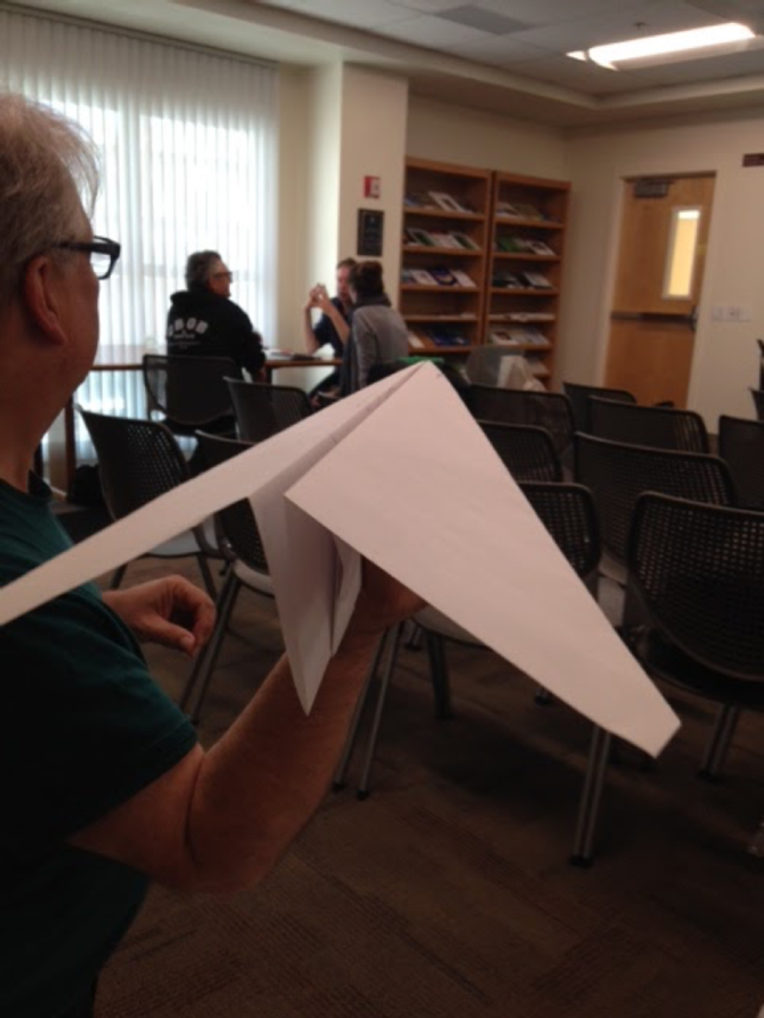

Dominic wanders over: “You’ve gone straight from the anxious to the ludic.”
Museword: pleasure.
We write “pleasure?” on the paper.
We fold: “Sure?”

We fold again: “?”
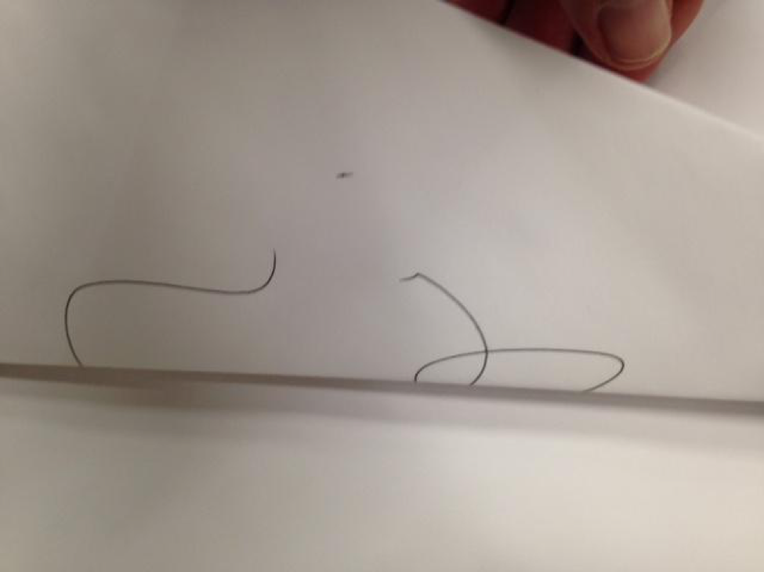
And again: “ . . . ” Language comes undone.
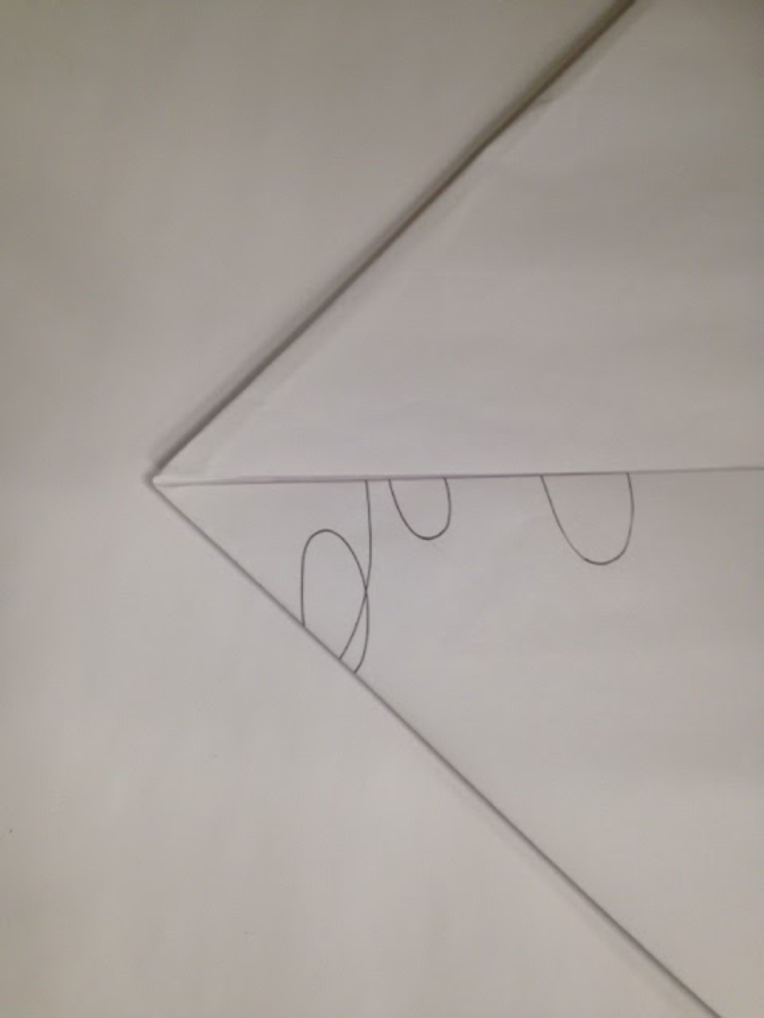
As we gain confidence and craft, we move to more complex designs that force us to work together differently. We become stuck. What the hell is an accordion fold?
We move from staged images of instructions to a YouTube video. Rewind, pause, rewind, pause. Is this it? No. Rewind, pause, rewind, pause. Wait: that might be right.
At this point, all three of us are engaged, encouraging, each taking turns and talking, folding, unfolding, and refolding through the more challenging parts.
We have quickly become adept collaborators and adroit airplane makers through a simple set of exercises in failing, making, and playing.
With each different plane design, we explore lines of flight. Some of the flightlines converge with our colleagues’ heads.
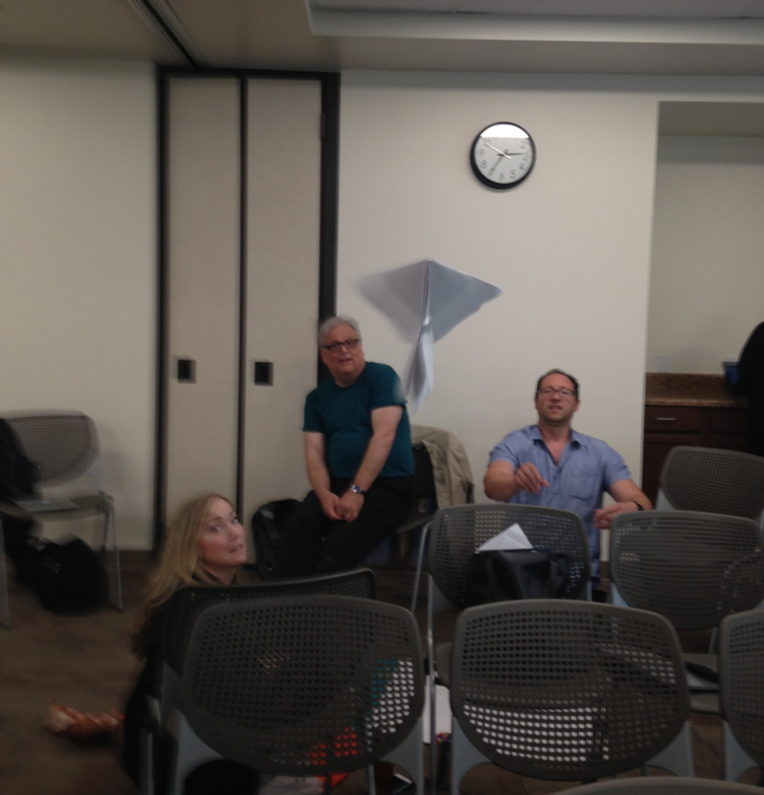
We move from the classroom to the hallway, and we stage a final launch.
What? Did you think it would just continue to fly, indefinitely?
We return to our circle formation. We collectively, silently retreat into a shared Google document to begin recording the steps of how our paper airplane project unfolded.
Huh, would you look at that? We manually figured our way into collaboratively writing a manual.